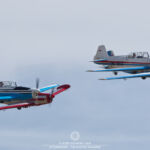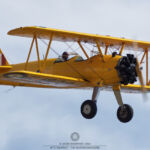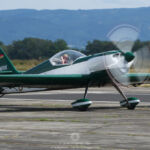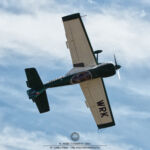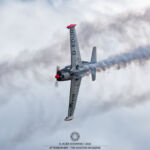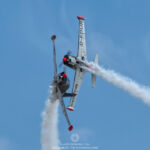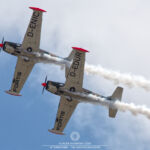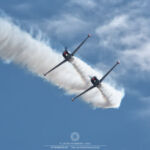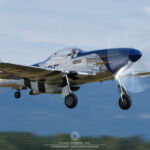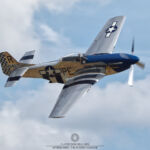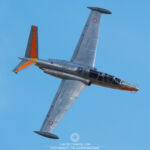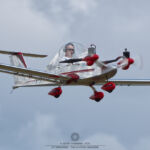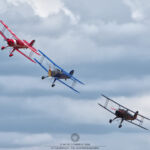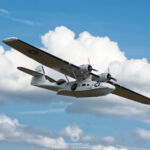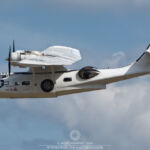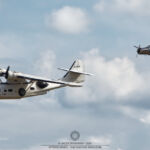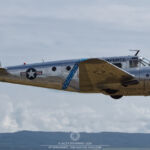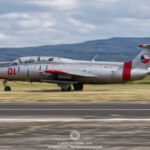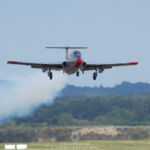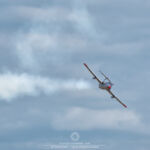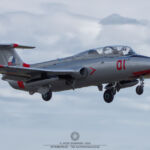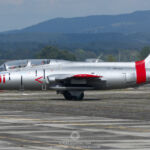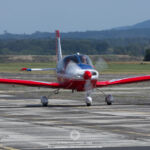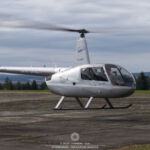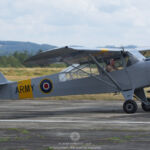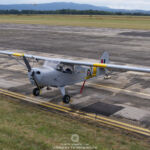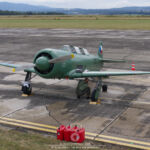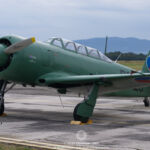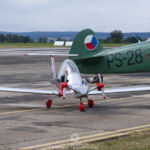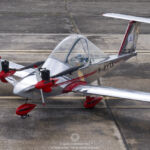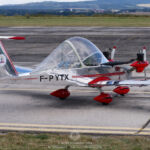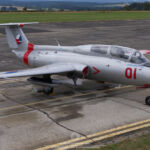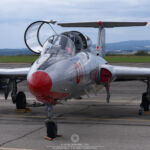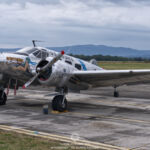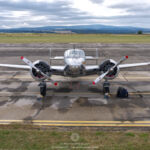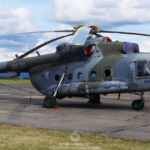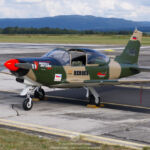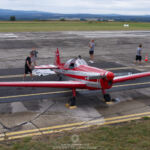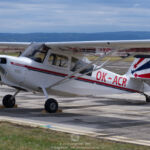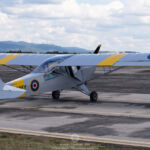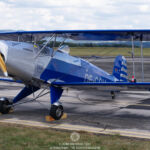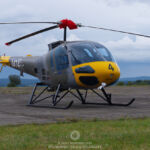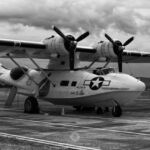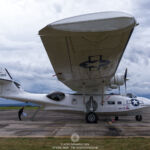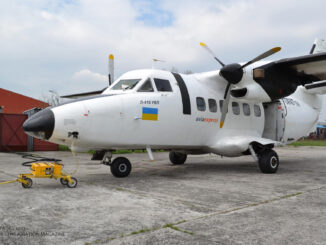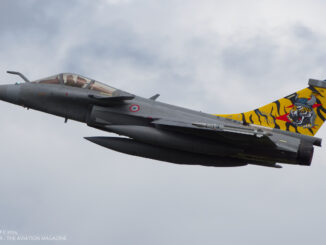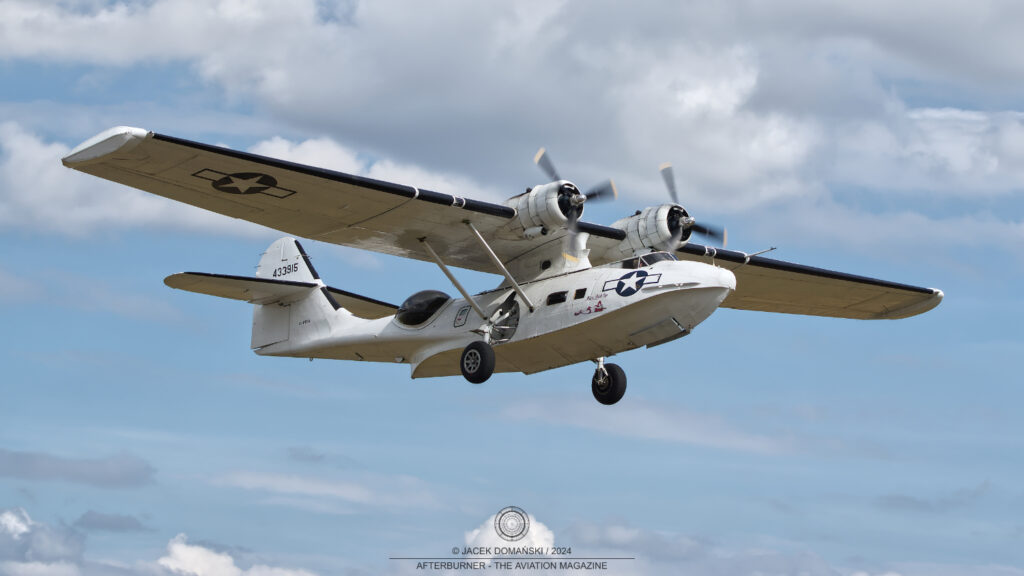 The ninth edition of Letecký den Cheb (Aviation Day Cheb), the biennial aviation event organized in West Bohemia region of the Czech Republic, took place on 17th and 18th August 2024. The two-day show boasted a delightful mix of aviation displays of rare and vintage aircraft, attracting thousands of spectators to the local airfield.
The ninth edition of Letecký den Cheb (Aviation Day Cheb), the biennial aviation event organized in West Bohemia region of the Czech Republic, took place on 17th and 18th August 2024. The two-day show boasted a delightful mix of aviation displays of rare and vintage aircraft, attracting thousands of spectators to the local airfield.
Cheb, until 1945 also known by its German name Eger, is a district city located in the Karlovy Vary Region of the Czech Republic which prides itself on its long-standing aviation traditions. The first – and nowadays no longer existing – grass airfield was established there already in 1917 by the Austro-Hungarian armed forces. At the time of creation of Czechoslovakia, it was the only operational aerodrome in the country.
The Cheb airfield witnessed establishment of Czechoslovak military aviation and then, was a seat of an aviation training centre. In 1928, it became home base for the 1st Air Regiment (Letecký pluk 1 ´T.G. Masaryk´) of the Czechoslovak Air Force. During the World War II, the air base was taken over by the Luftwaffe and still used for training purposes. The airfield was destroyed at the end of the war in result of the Allied bomb raids and was never rebuilt again.
However, yet in 1939, works on construction of the new airfield in Cheb began. It was established about 1,5 kilometres from the old aerodrome and intended to be a factory airfield for Flugzeugwerk Eger GmbH´ (English: Aviation Works Cheb – FWE), which manufactured Heinkel He 111 bombers there. The new airfield was ready in 1943 and featured a concrete runway measuring 1,400 metres in length and 53 metres in width, as well as the secondary grass runway (1,000 metres x 25 metres, respectively).
In the late years of the World War II, the FWE factory also produced parts for He 117 and He 219 aircraft, provided their repairs and, finally, made the famous first operational jet fighter in the world, Messerschmitt Me 262 Schwalbe (English: swallow). At the end of the war, similarly to the earlier mentioned aerodrome, also this airfield and the nearby factory were heavily bombed by the Allied aircraft and suffered serious damage.
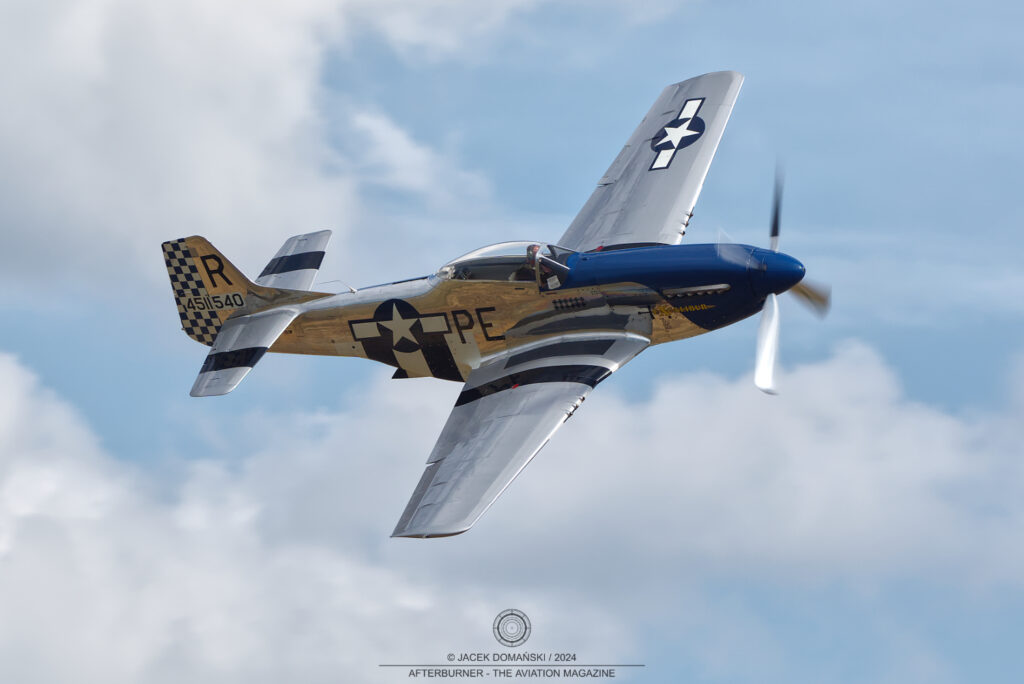
After the war, the second Cheb aerodrome, was slowly rebuilt from the wartime damage, unlike the first one. Within a short time, an aeroclub was established there, as well as works began to turn the former factory airfield into a civil international airport. However, those activities were interrupted by the 1948 Czechoslovak coup d’état and the Cheb airfield was taken over by the Czechoslovak armed forces.
Despite being an army airfield, Cheb was not used as an active air base, except the years 1952-1953, when it was a home for alarm unit of Yak-23 fighters. Since the beginning of the 1980s, the airfield was used by agricultural aviation.
After the Velvet Revolution, civil aviation slowly started to return to Cheb. In 1997, Ultralight Club Cheb (UCC) was formed there and later that year, the association organized there the first post-war aviation event – an air show of model aircraft. In the middle of 2000s, the airfield was taken over by the city council and a few years later finally opened for general aviation operations.
In 2007, the first air show in the modern history of Cheb airfield was organized there, thus referring to once famous aviation events held at the local air base between 1923 and 1933. The next aviation day at Cheb was held yet in 2008 but later the event formula was changed to biennial air show.
This year´s edition of the show not only brought an interesting programme of flying displays but, moreover, many of them were performed by truly legendary aircraft and well-known pilots.
The World War II aeroplanes were undisputed highlight of the show. Among them, there was Consolidated PBY-5A Catalina ´Miss Pick Up´, operated by the Catalina Society from the United Kingdom (please refer to our article PBY-5A Catalina ´Miss Pick Up´ for detailed history of this aircraft) and a full-scale replica of the Messerschmitt Me 262 Schwalbe, operated by Messerschmitt Stiftung in Manching, Germany (more information about this aeroplane can be found in our article Messerschmitt Me-262A-1C ´Schwalbe´). And for both the aforementioned aircraft, Letecký den Cheb was the sole aviation event in the Czech Republic they participated in this year.
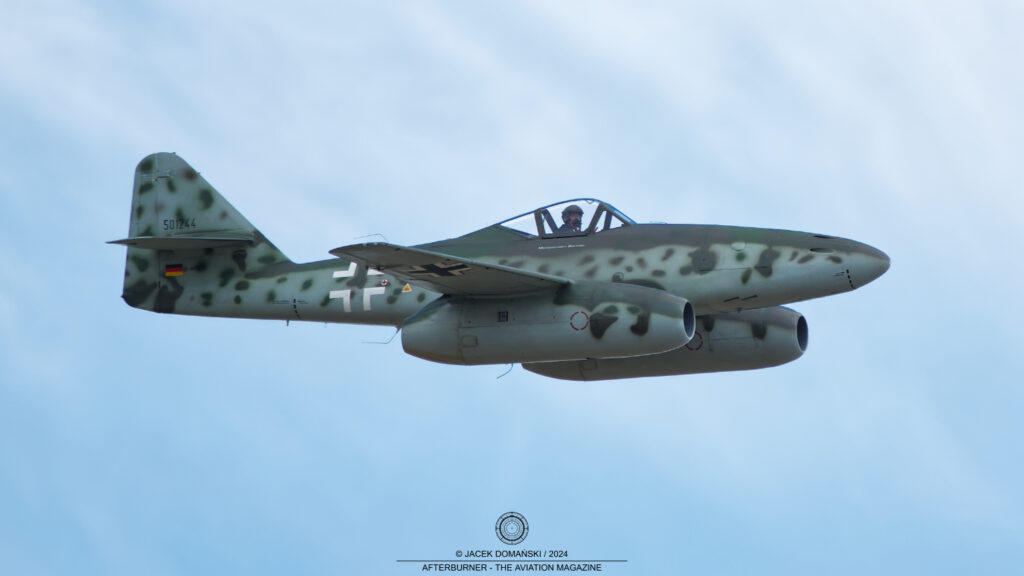
Other World War II warbirds to perform flying displays in Cheb were North American P-51D Mustang ´Excalibur´, Boeing 75 Stearman, Beechcraft C-45H Expeditor and Taylorcraft Auster Mk V.
Visitors to the Cheb airfield were also marvelled with skilled aerobatic displays, performed by famous Czech aerobatic pilot Petr Jirmus (Zlín Z-50LS), Ralf and Nico Niebergal from Germany (2x SIAI-Marchetti SF-260), as well as glider aerobatic show flew by David Jágr (Letov LF-107 Luňak).
A pretty special aerobatic display was performed by American Champion 8KCAB Super Decathlon. This high-wing aeroplane, equipped with strut-braced wings and bulbous cockpit, is nothing like the modern aerobatic specials. However, the Super Decathlon is capable of sustaining stresses between +6g and -5g, which makes it an aviation variant of so-called ´sleeper car´ boasting high performance, while having an unassuming appearance.
The show was also marked by its three premiere displays. The first was performed by Trenér Box aerobatic team, flying four different variants of Zlín Z-526 Trenér aircraft – Z-526, Z-526M, Z-526F and Z-256AFS-V. It should be also mentioned here that the display in Cheb was the first performance of the team in the Western Bohemia region.
The second premiere of Cheb airshow was Fouga CM.170 Magister, flew by French pilot Laurent Golay. The Magister arrived from Plzeň-Líně airfield, where the aeroplane is currently being based. That French training aircraft of the 1950s is a new entrant to the Czech aviation events, having its premiere display in April of 2024, during Den ve vzduchu in Plasy, but already became a star of domestic air shows, attracting much attention from the public.
And the last debute display, this time at national level, was the aforementioned performance of the SF-260 duo. It was fascinating to watch the first appearance of Ralf Niebergal and his son Nico at the Czech aviation event – lovely shapes of the SIAI-Marchetti trainers and masterful coordination of its pilots.
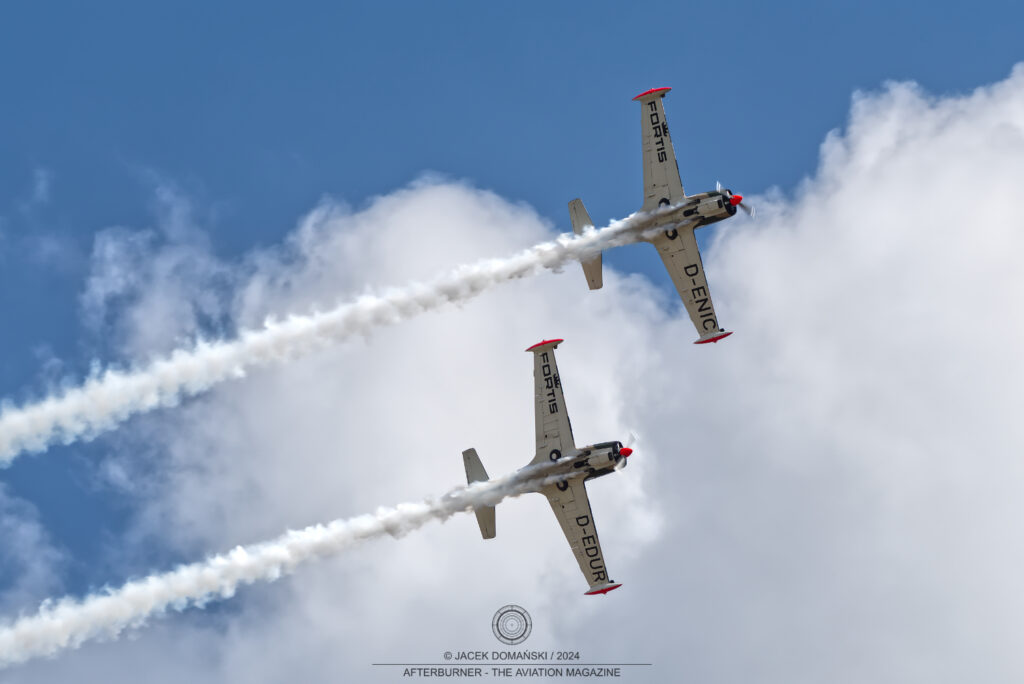
Colomban MC-15 Cri-Cri was another interesting aeroplane participating in the latest edition of the Cheb air show. Considered the smallest twin-engine, crewed aircraft in the world, the MC-15 awakened a lot of curiosity among the visitors who were surprised not only by its size but also smooth performance during the flying display.
Letecký den Cheb also offered a lovely performance for biplane lovers. It was performed by a formation of three aircraft, already familiar to domestic spectators from its previous show at Plasy. All three aircraft belong to Bücker Bü 131 Jungmann family, a popular German training aircraft from the 1930s and 1940s. Two of them represented the post-war, Spanish-made CASA 1.131E variant (built 1958 and 1961, respectively), and the third was a modern replica of the Czech-made version, Tatra T-131. As usual, the formation display was followed by a short solo performance of the Lycoming powered, red-painted CASA 1.131E.
Centrum Leteckého Výcviku (Flight Training Centre – CLV) in Pardubice participated in the flying display programme with two of its aircraft. The first of them was a historical C-11 trainer, the Czech variant of Yak-11 aeroplane, built under license between 1953 and 1956. This particular aircraft was manufactured in 1955 and currently is owned by the state Military History Institute and operated by CLV.
The second CLV flying display was performed by Enstrom 480B-G, the modern light utility helicopter used by the Centre for pilot training purposes.
There was also another rotorcraft flying display performed at the Cheb airshow, flew by Jan Bergauer, who showcased one of the most popular helicopters in the world, the four-seat Robinson R44 (more information about the Robinson rotorcraft family can be found in our article from November of 2022 – Franklin D. Robinson, godfather of popular helicopters, passed away).
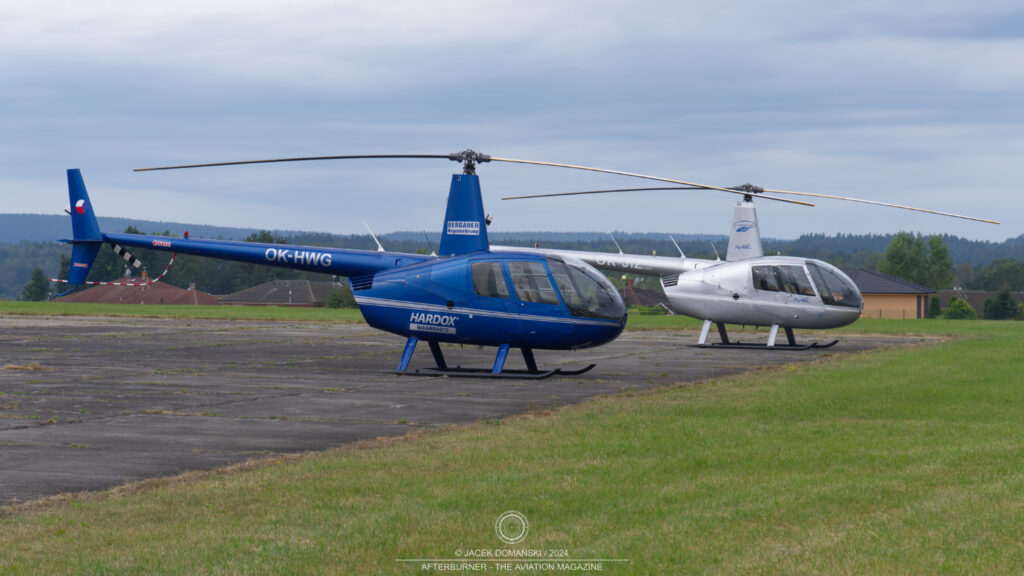
Last but not least, there was also a flying display of a famous Czechoslovak jet trainer, Aero L-29 Delfín. This military training aircraft was manufactured between 1963-1974 and was not only one of the most popular trainers of the era but also the standard training jet for the Warsaw Pact nations (except Poland).
The flying programme of the Cheb aviation day 2024 offered about three hours of flying displays, mostly with the same schedule on Saturday and Sunday. The only changes on Sunday were the opening flypast performed by JAS-39 Gripen fighters of the Czech Air Force and then cancellation of the Stearman and the Me 262 displays, forced by bad weather conditions.
Although it may seem that three hours of flying programme is not much, especially comparing to other air shows of similar level, Letecký den Cheb chose quality over quantity. The event offered a spellbinding choice of aircraft, being the only show in the region to showcase together the World War II legends such as Catalina, Me 262 and Mustang, combined with aerobatics, aviation curiosities like the Cri Cri and an interesting choice of other aircraft.
Moreover, the Cheb show was marked by some formation flights, both spectacular and unusual, which created additional value of the event. The first of them moved the spectators back in time into 1945, the days the Messerschmitt Me 262s were assembled in the nearby FWE factory and operated from the Cheb airfield. It was a spectacular joint display of the P-51D Mustang and Schwalbe, bringing to mind fighter operations from the World War II, when the Allied pilots were hunting for the world´s first operational jets near their air bases, trying to shot down the Me 262s at the most vulnerable moment, while they were approaching the runway for landing. And indeed, at least two Schwalbe jets were shot down in the vicinity of the Cheb airfield in the spring of 1945.
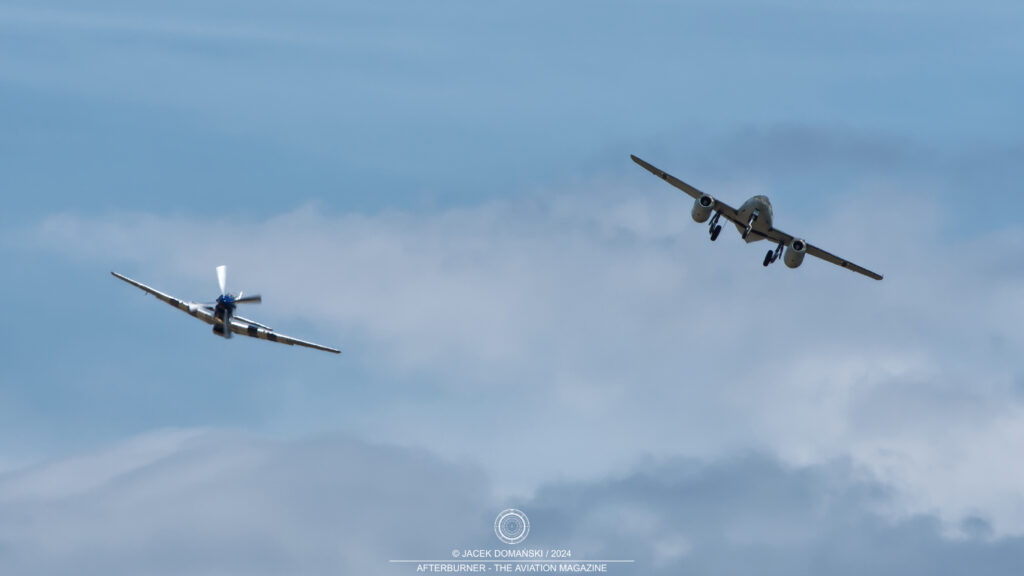
Then, there was a joint performance of the PBY-5A Catalina and the C-45H Expeditor, followed by another unusual display, this time flew by the P-51D Mustang and the L-29 Delfín.
In addition to the abovementioned flying displays, visitors to the Cheb airfield were able to enjoy the static display, where the majority of participating aircraft was showcased. The only exceptions were the Me 262 and the Magister, which operated from their home bases in Manching and Plzeň, respectively. The static exhibition included also another aircraft from the CLV inventory, Mil Mi-17 medium utility helicopter which, however, did not participate in the flying programme of the show.
Although the flying displays commenced at 1 p.m., gates of the airfield were opened for public already at 9 a.m., thus giving plenty of time to enjoy the static display and other attractions of the show, such as possibility to see the legendary Catalina from inside or experience the sightseeing flights in Robinson helicopters.
It should be noted that the show was marked by high-quality commentary, provided by Radim Jehlík and the Karlovy Vary branch of Czech Radio. The commenter not only provided current information about the show but also invited several interesting hosts to comment the flying displays and tell their aviation stories – such as aerobatic pilot Petr Jirmus and Luděk Matějíček, the chairman of UCC. There was also a live broadcast from Letecký den Cheb available on the Czech Radio station.
At the end we must note it was our first visit at the Cheb airfield and we were pleasantly surprised by the show. Although being just a regional aviation event, Letecký den Cheb 2024 proved it was planned a much higher level – well organized, offering plenty of interesting flying displays performed by skilled pilots and their legendary aircraft, as well as good commentary. In conclusion, we rank the Cheb air show among the best aviation events we participated this year, hoping the next edition would be even better.
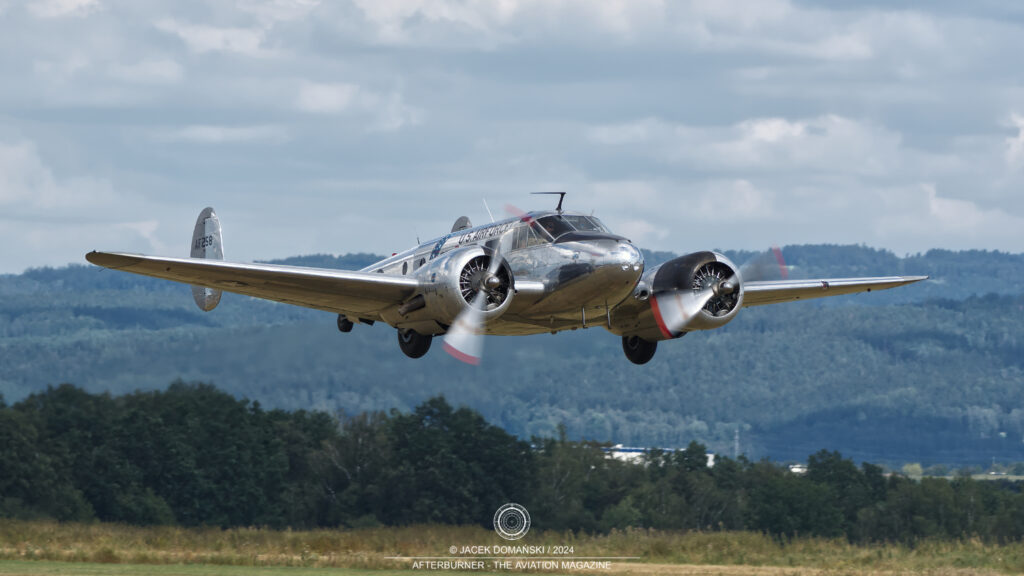
Moreover, we have to admit that we were also captivated by beauty of Cheb city and the whole region, which is, without any doubts, an interesting place to visit.
(Additional information about some of the aircraft participating in Letecký den Cheb 2024 can be found under particular links, highlighted in the article body above)
More images from Letecký den Cheb:

